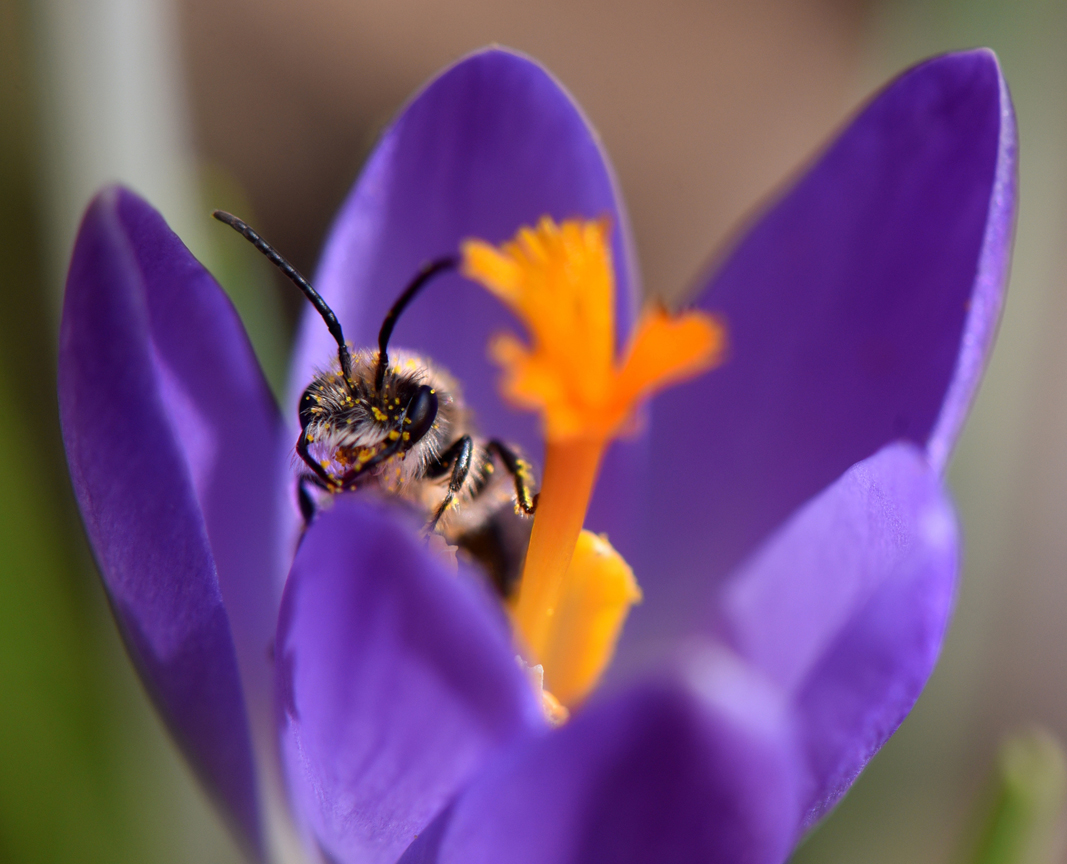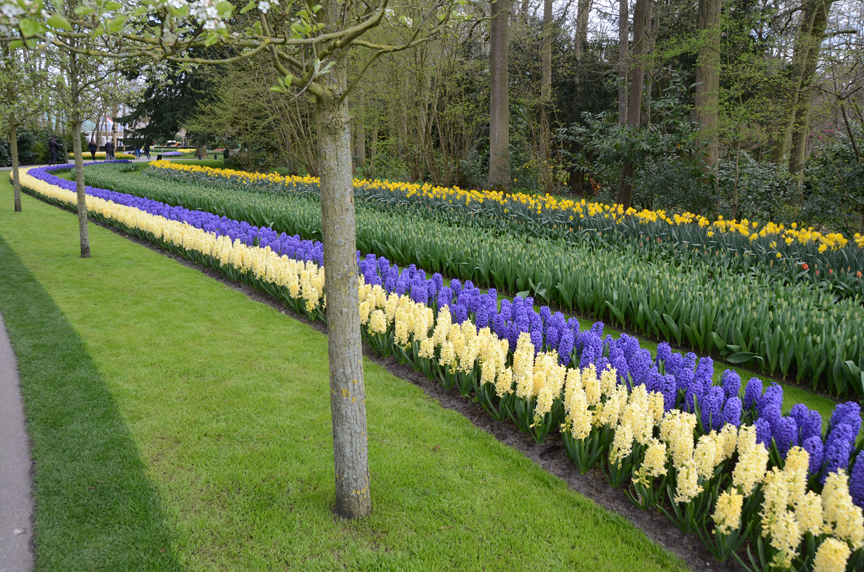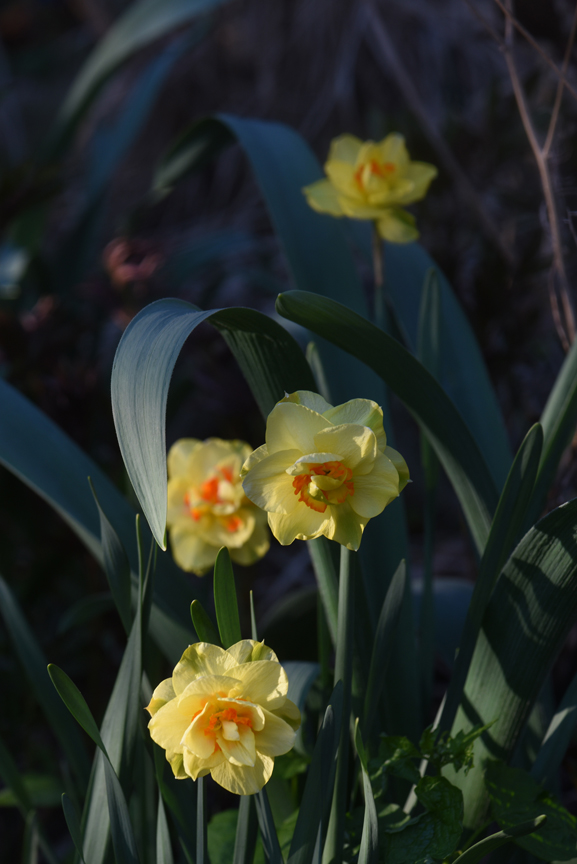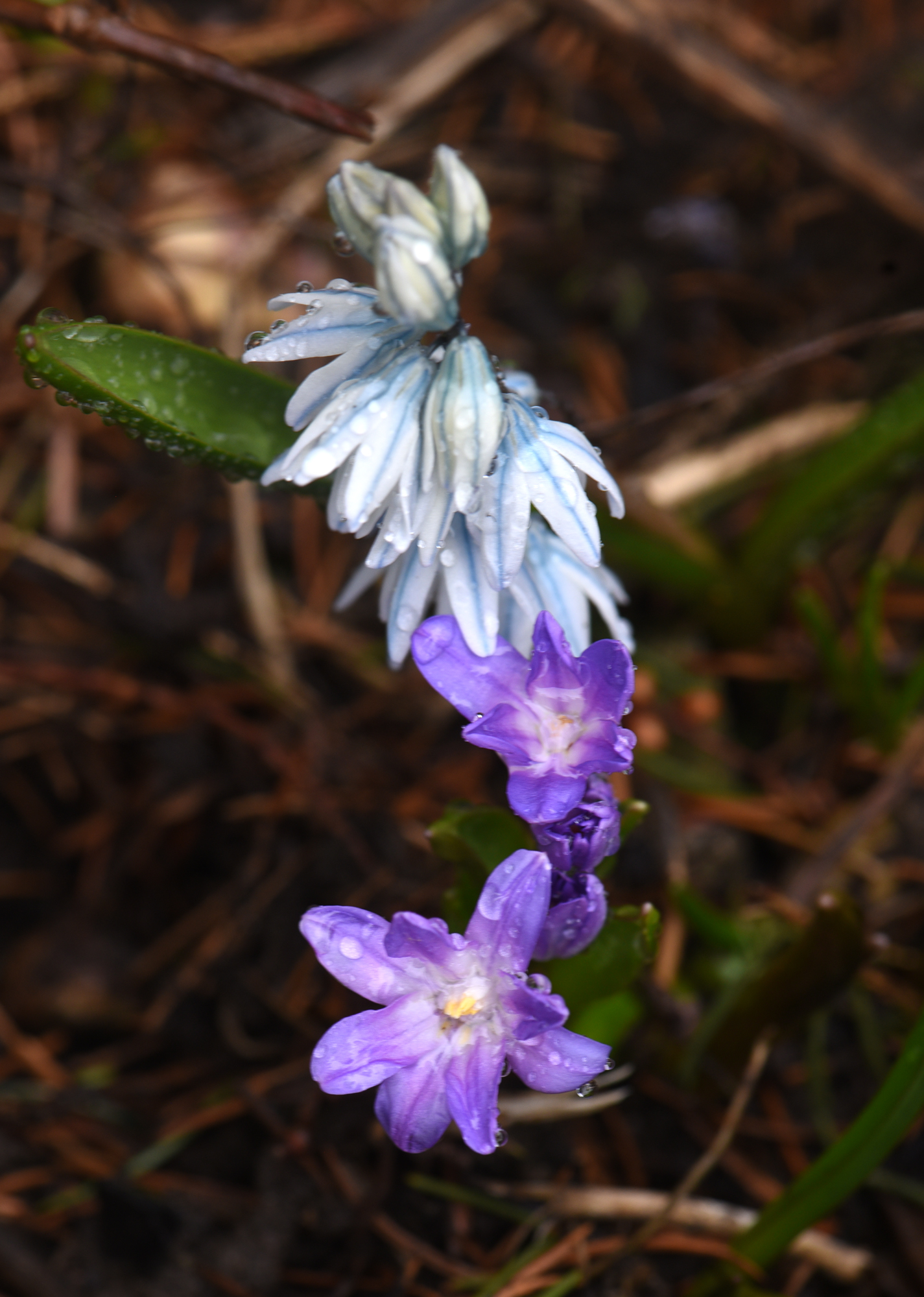Planting fall bulbs for spring flowers
Posted on: October 31, 2019 | Written By: Doug Oster |
There was a little patch of purple and yellow crocus flowers blooming annually at my childhood
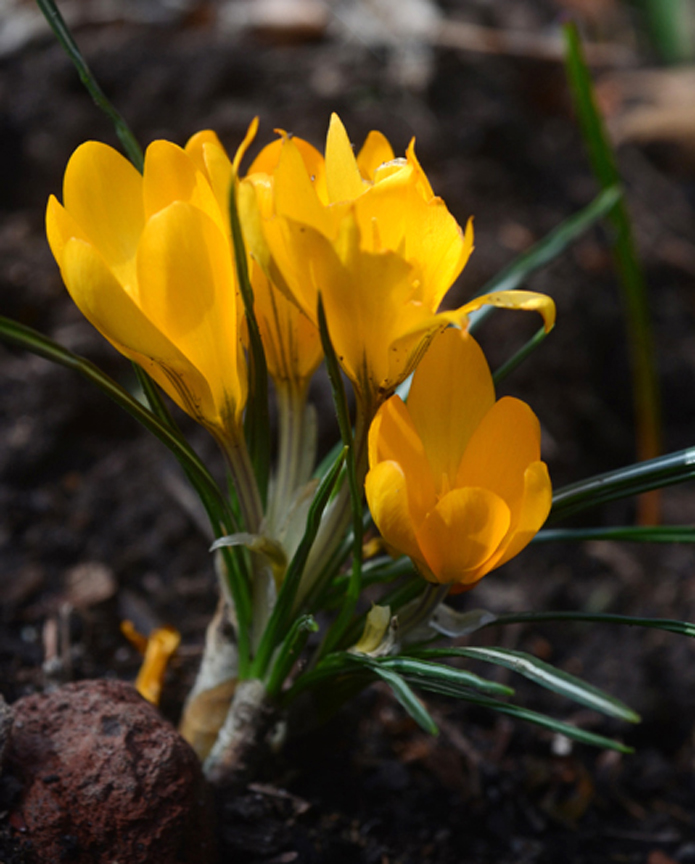
These ‘Yellow Mammoth’ crocus are the same variety that grew at my childhood home. Planting fall bulbs now will provide spring flowers. Photos by Doug Oster
home. They were right at the base of a hose spigot near our well.
When I would run home after school in the spring, I’d see those flowers and connect the dots, knowing the school year was waning.
Decades later I was doing pretty well cleaning out that house, until I turned to see the luminescent orange flowers in full bloom. I recognize them now to be ‘Yellow Mammoth’ crocus, and I plant them every year as a reminder of the old place and simpler, happy times.
Flowers from spring bulbs are ephemeral, some only lasting a few weeks, but when they bloom, the flowers herald the beginning of another wonderful season.
Bulb planting is fading away with gardeners; nurseries are carrying fewer and fewer of them. I’ve been planting them every fall for more than three decades and can’t imagine a fall without getting them in the ground.
Planting bulbs
The tool, which makes the job fun and easy, is called a bulb auger. I’ve used many different versions but have settled on the Power Pro version that’s only seven inches long. It’s simply a giant drill bit used in any power drill, although I prefer a 20 volt battery-powered version for my planting chores. This Power Pro auger is built to last, and it has a hexagonal shaft that prevents slippage. Since it’s short, all the work is done from my knees instead of getting up and down when using a longer tool. A hundred bulbs can be planted in about 20 minutes or less, depending on their size.

This is the Power Planter Earth Auger (3″x7″ version). It’s great for planting bulbs and other things in the garden.
Bulbs are planted about three times as deep as the bulb itself. Most prefer a place with full sun, good drainage and conditions that let them dry out when done blooming. Hillsides and drip lines of trees work well, but you’ll discover many will thrive just about anywhere in the garden.
As an obsessed bulb planter, I photograph the spring show and write down notes about where I need more color so I know where to plant now. The same sort of record is made in the fall so I know what’s what when they bloom. Even with all the planning, I’ll discover areas that are already planted, and then move on to continue the work.
Bulbs can be planted until the ground freezes solid.
There’s a feeling of excitement while planting bulbs. The fact that there’s nothing immediate about planting a dried orb in the ground adds to the expectations of seeing the spectacular colors, shapes and forms revealed next year. The delayed gratification makes the job so rewarding.
The 4 most popular bulbs
Gardeners are often put off by bulb planting after putting in 50 tulips one year, enjoying the flowers the next spring, but never seeing them again. I treat most tulips as annuals and also warn that they are deer candy, a favorite of the four-legged marauders. Mine are planted in the vegetable garden after frost takes the tender plants. The fenced-in area will keep them safe from deer and since they are not in the ornamental garden, they can be used for cutting and displaying in a vase without worrying about changing the look of a display garden.
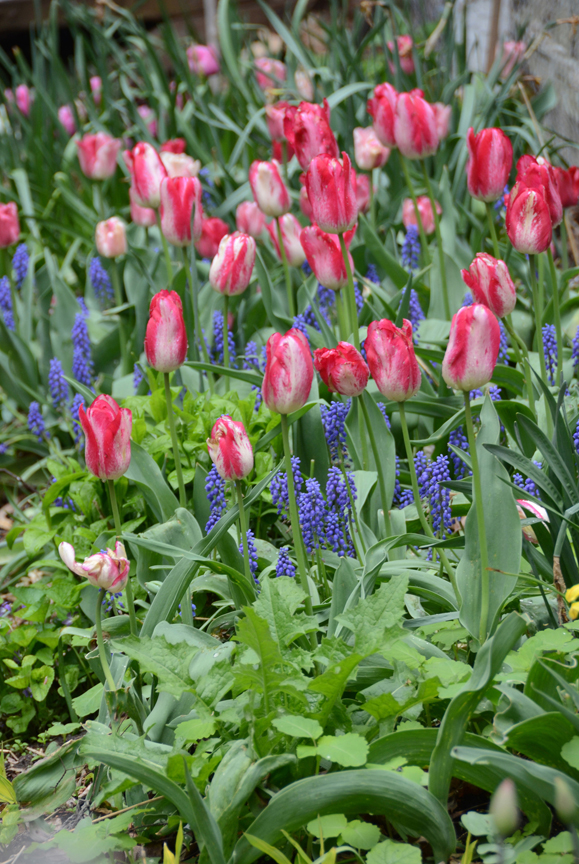
Tulips and hyacinths bloom together behind the protection of a fence around the vegetable garden. The bulbs are planted now and will flower in the spring.
Daffodils, crocus and hyacinths are nearly as popular but more perennial than tulips. The daffodils are the hardiest, and there are 13 different types, which go far beyond yellow trumpets. I love those trumpets, but there are so many other interesting cultivars to enjoy. By planting early, mid-season and late bloomers, something is in bloom from the end of March through May.
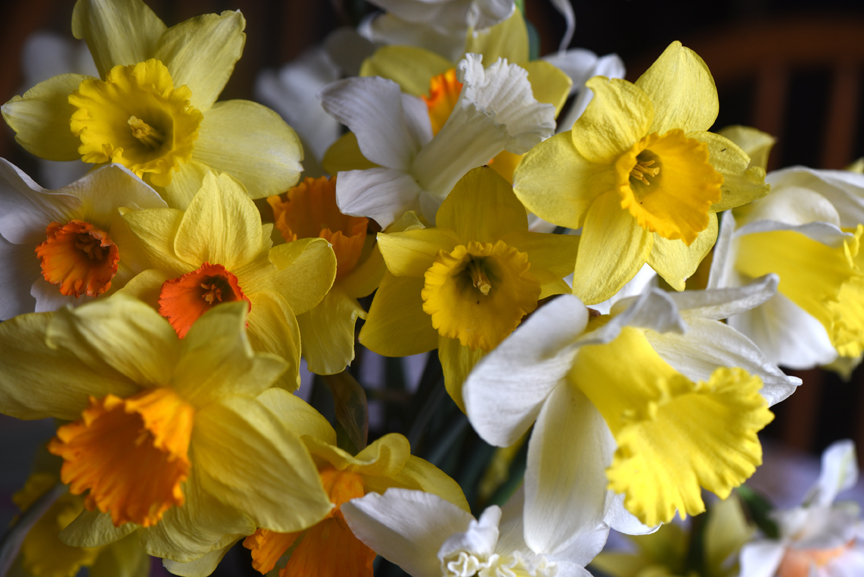
Daffodils come in many different shapes and sizes.
I learned a great tip to keep crocus bulbs safe from rodents. Brent Heath of Brent and Becky’s Bulbs soaks his bulbs in an animal repellent before planting. I’ve been using Bobbex when I plant crocus and tulip bulbs with great success.

Early flowering spring bulbs like crocus will help pollinators. The bulbs are planted now and will flower in the spring. Soak them
Deer and other pests aren’t interested in the hyacinths. They will last a few years, but their fragrance is intoxicating and a must in my garden.
More bulb choices
After the big four, there are other bulbs that aren’t as popular but offer so much for the gardener.
Snowdrops are one of the first things to bloom; in my garden they have flowered as early as the middle of January. Depending on the winter, they could produce small white flowers then or wait until March. They can bloom early, freeze solid and still do their thing during another thaw. The deer don’t bother them, and they make a colony after a few years.
Glory of Snow (chionodoxa) is also deer resistant and blooms after the crocus with blue, pink, white or violet flowers. It’s another great bulb that will happily expand its territory year after year.
Puschkinia is new to me, but it’s been around for a hundred years. It’s always fun to discover a jewel for the garden. It’s another deer-resistant flower that blooms in consort with glory of snow. The creamy white flowers have pretty blue stripes and also will multiply freely.
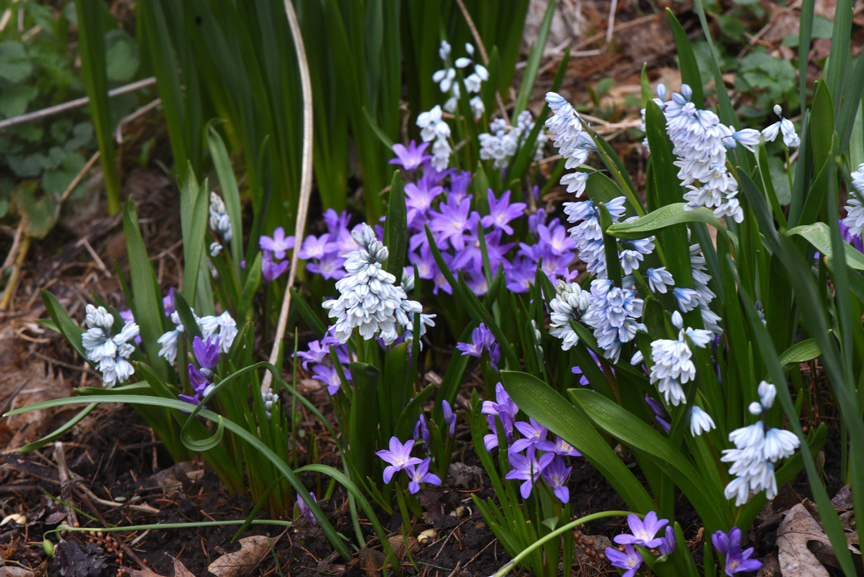
The blue flowers are puschkenia and the purple are ‘Violet Beauty’ glory of snow. These are some of the spring blooming bulbs that can be ordered right now. They make a great combination and are deer resistant.
Alliums are from the onion family. The most popular are purple globes, which bloom in late spring. There are many more cultivars though, and all of them are deer resistant.
Take a look at fritillaria, camassia, anemone and lilies to expand the flower palette in your garden. They are all hardy and will give the landscape a unique look.
Where to buy bulbs
Garden centers and nurseries are a great place to get them, and they are often put on sale as the season progresses.
If you can’t find what you want locally, there are great online stores, too, but be sure to deal with one that’s reputable, showing the size of the bulbs being offered. Brent and Becky’s Bulbs, Old House Gardens, John Scheepers, Van Engelen, Longfield Gardens, and Colorblends, and White Flower Farm are a few I like, but there are plenty more good sources out there.
Flowerbulbs.com celebrates all things bulbs.
Planting bulbs now will make the change in the weather this spring even more magnificent.
Doug Oster is editor of Everybody Gardens, a website operated by 535Media, LLC. Reach him at 412-965-3278 or doster@535mediallc.com. See other stories, videos, blogs, tips and more at everybodygardens.com.
More from Everybody Gardens
Doug’s favorite bulbs
Planting garlic to enjoy 5 different harvests
Video tutorial: How to plant bulbs
